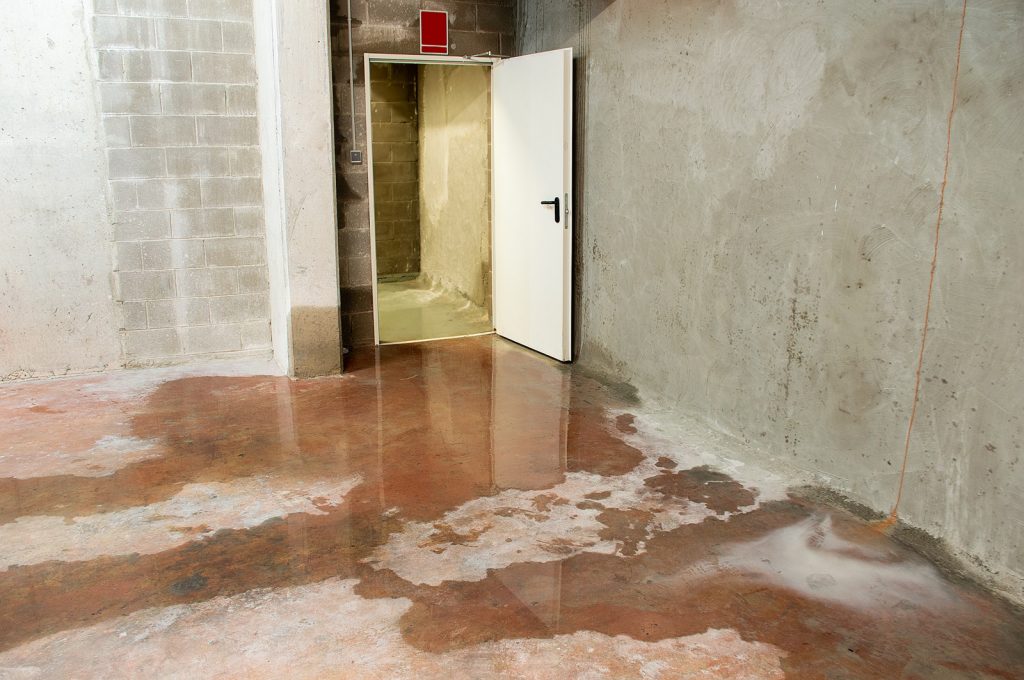Mold, including potentially harmful black molds, thrives in humid environments that have little ventilation and sunlight. Thus, it doesn’t take long for mold to grow on organic material like cardboard or drywall if these conditions are met. Garages are typical havens for mold unless homeowners take proper steps to reduce moisture. But fret not. You can keep mold from infesting your garage by taking simple measures. In this article, you will learn how to remove mold in the garage and how to prevent it.
How to Get Rid of Mold in the Garage
Removing mold in the garage is essential not only for preserving the structural integrity of the space but also for safeguarding your health and preventing further mold growth. Here’s a step-by-step guide on how to effectively remove mold from your garage:
- Safety Precautions: Before starting the mold removal process, ensure you wear protective gear such as gloves, goggles, and a mask to prevent exposure to mold spores and cleaning agents.
- Assess the Mold Damage: Inspect your garage thoroughly to identify areas affected by mold growth, including any signs of black molds on walls, ceilings, floors, stored items, and any other surfaces.
- Ventilation: Open windows and doors to ventilate the garage and improve air circulation. This helps in reducing moisture levels and dissipating mold spores during the removal process.
- Remove Clutter: Declutter your garage to create more space for maneuvering and cleaning. Remove any items or belongings that may be harboring mold or hindering access to mold-affected areas.
- Dry Wet Surfaces: Address any sources of moisture in the garage, such as leaks or condensation. Thoroughly dry any wet surfaces using fans, dehumidifiers, or towels to prevent further mold growth.
- Scrub Moldy Surfaces: Mix a solution of water and mild detergent or dish soap in a bucket. Use a scrub brush or sponge to scrub moldy surfaces vigorously, focusing on areas with visible mold growth. Rinse the area with clean and warm water and allow it to dry completely. Don’t use bleach.
- Use Mold Removal Products: For stubborn mold growth, consider using commercial mold removal products specifically designed for use on garage surfaces. Follow the manufacturer’s instructions carefully when applying these products.
- Apply Natural Remedies: You also have the option of utilizing natural solutions like white vinegar, hydrogen peroxide, or baking soda for removing mold in your garage. These natural agents are effective at killing mold and are safer for the environment.
- Dispose of Contaminated Materials: Dispose of any porous materials or items that are heavily contaminated with mold in the garage and cannot be effectively cleaned, such as cardboard boxes or old furniture. Seal them in plastic bags before disposing of them to prevent the spread of mold spores.
- Preventative Measures: Take steps to prevent mold from returning to your garage by addressing underlying moisture issues, improving ventilation, and maintaining cleanliness. Consider installing a dehumidifier or ventilation fan to control humidity levels.
- Regular Maintenance: Perform regular inspections and cleaning routines in your garage to identify and address any signs of mold growth promptly. Keep the garage well-organized and free of clutter to minimize potential hiding spots for mold.
- Seek Professional Help: If the mold infestation in your garage is extensive or if you’re unsure about how to proceed with removal, consider seeking professional mold remediation services. Experienced professionals like PuroClean can assess the situation and provide effective solutions for mold removal.

Tips for Preventing Mold in the Garage
- Check your garage for leaks. Inspect the areas in your garage, such as the roof, floor, gutters, and pipes, to ensure that they are in good condition. Fix any cracks and damage you find immediately.
- Seal and insulate your garage door. To weather-proof your garage, it’s important to seal and insulate your garage door properly. Replace torn, ragged, or crumbling weather stripping immediately. In addition, check the bottom seal for elasticity, shrinkage, and wear. As for insulation, a pre-insulated garage door panel has a much higher R-value (the measure of how well an object resists the conductive flow of heat).
- Decrease humidity. Since garages can attract a lot of moisture due to being exposed more to the elements, it may have a high humidity (over 50%) that allows garage mold to grow. To control humidity levels, provide proper ventilation using vents and fans, and let sunlight in for a couple of hours daily. Also, use a dehumidifier to lower the moisture level.
- Install waterproof walls. If you’re building a new garage or remodeling an old one, choose mold-resistant drywall, as well as waterproof paint on walls and concrete. Alternatively, use pre-coated aluminum or vinyl siding for better protection against water and mold.
- Remove standing water. Pooling water in garages may come from various sources, such as outside precipitation, snow-covered tires, or even washing your car. Remove any standing water with a squeegee or mop and dry the area quickly to prevent mold growth.
- Have proper drainage. A garage floor drainage system is essential to avoiding water damage and flooding in the garage. Make sure your garage has drainage in addition to a proper floor slope that diverts water away from your garage.
- Extend gutter downspouts. Gutters and downspouts are your home and garage’s first line of defense against precipitation. To prevent moisture buildup around your garage, ensure your downspouts extend at least 10 feet away from the garage foundation. Also, keep the gutters clean and well-maintained throughout the year.
- Use waterproof containers. Water, and thus mold, is attracted to cardboard, paper, drywall, and other porous materials. To help avoid mold in your garage, use sturdy, plastic totes instead of cardboard storage boxes. Plastic provides better protection to contents and is not a source of mold food.
- Reduce plant growth around your garage. Shrubs or plants may look nice, but they collect moisture and may cause leaks in your garage. So keep them at a safe distance away from your garage walls and windows.
Got Mold in Your Garage? Contact Your Local PuroClean Office For Mold Remediation Services
Mold will have a harder time growing when there’s less moisture in the garage. Follow these tips to keep mold at bay and enjoy a healthier home. For flood water damage repair and mold remediation services, contact your local PuroClean office.




